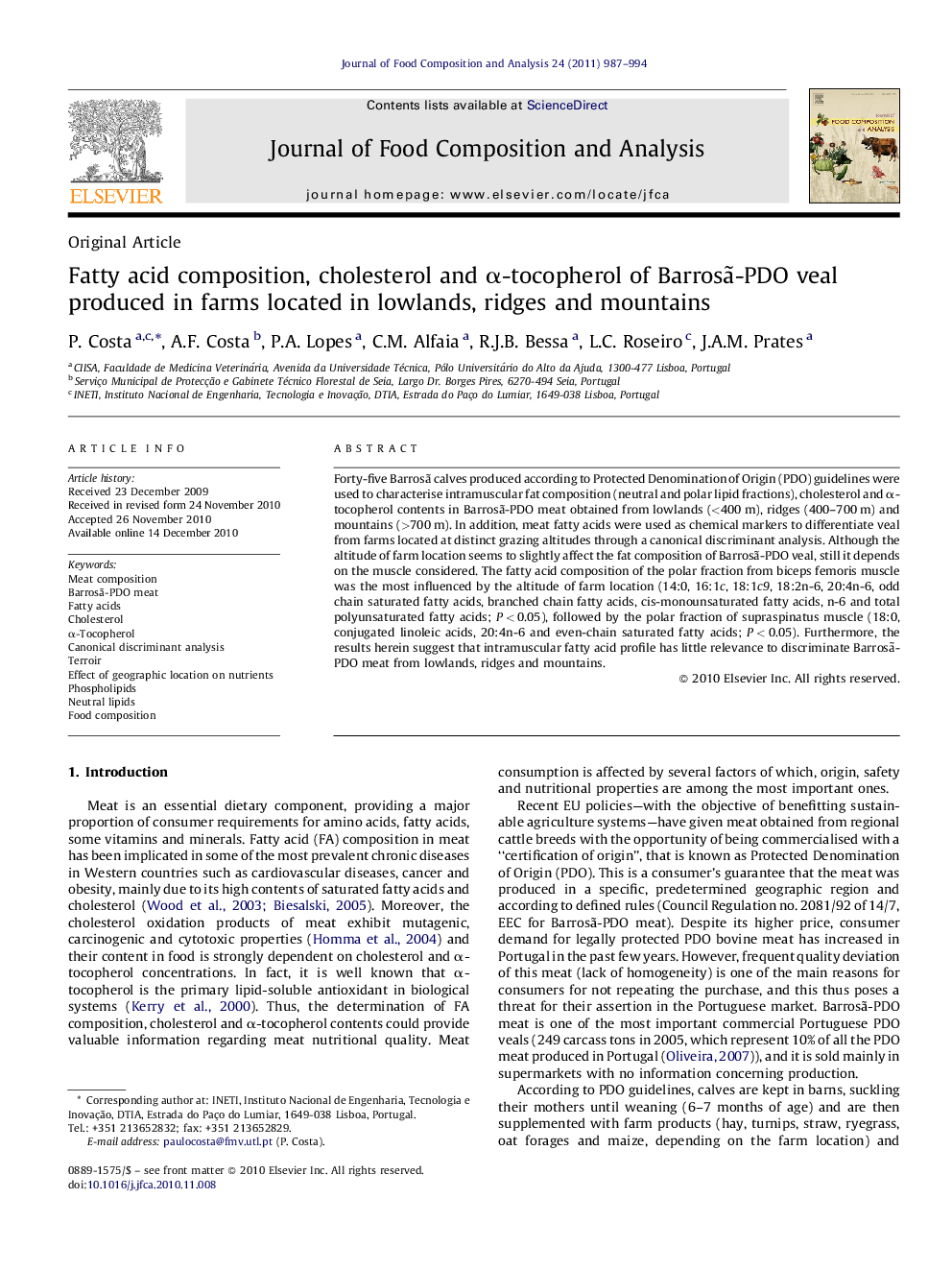| Article ID | Journal | Published Year | Pages | File Type |
|---|---|---|---|---|
| 10552806 | Journal of Food Composition and Analysis | 2011 | 8 Pages |
Abstract
Forty-five Barrosã calves produced according to Protected Denomination of Origin (PDO) guidelines were used to characterise intramuscular fat composition (neutral and polar lipid fractions), cholesterol and α-tocopherol contents in Barrosã-PDO meat obtained from lowlands (<400 m), ridges (400-700 m) and mountains (>700 m). In addition, meat fatty acids were used as chemical markers to differentiate veal from farms located at distinct grazing altitudes through a canonical discriminant analysis. Although the altitude of farm location seems to slightly affect the fat composition of Barrosã-PDO veal, still it depends on the muscle considered. The fatty acid composition of the polar fraction from biceps femoris muscle was the most influenced by the altitude of farm location (14:0, 16:1c, 18:1c9, 18:2n-6, 20:4n-6, odd chain saturated fatty acids, branched chain fatty acids, cis-monounsaturated fatty acids, n-6 and total polyunsaturated fatty acids; P < 0.05), followed by the polar fraction of supraspinatus muscle (18:0, conjugated linoleic acids, 20:4n-6 and even-chain saturated fatty acids; P < 0.05). Furthermore, the results herein suggest that intramuscular fatty acid profile has little relevance to discriminate Barrosã-PDO meat from lowlands, ridges and mountains.
Keywords
Related Topics
Physical Sciences and Engineering
Chemistry
Analytical Chemistry
Authors
P. Costa, A.F. Costa, P.A. Lopes, C.M. Alfaia, R.J.B. Bessa, L.C. Roseiro, J.A.M. Prates,
